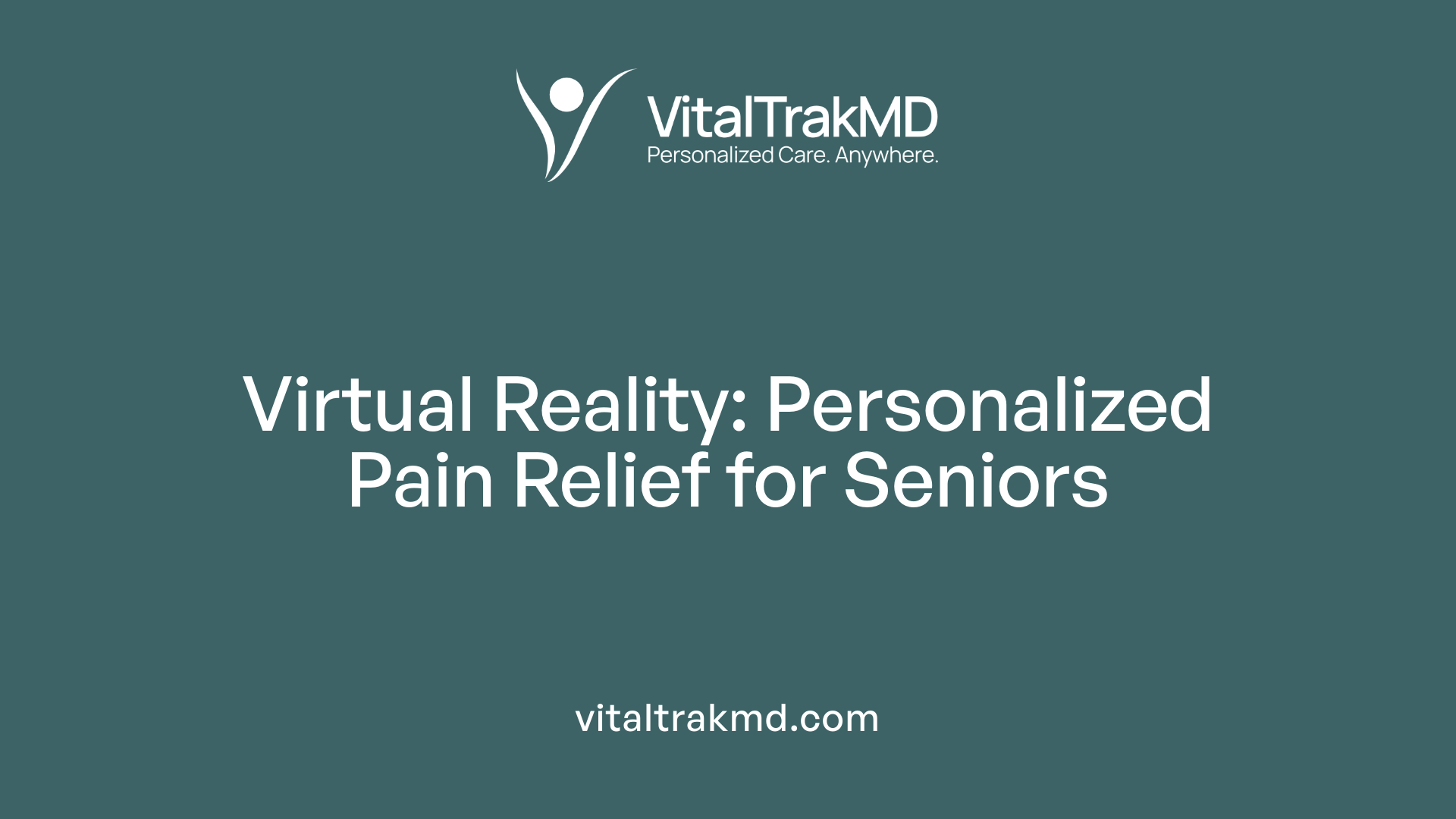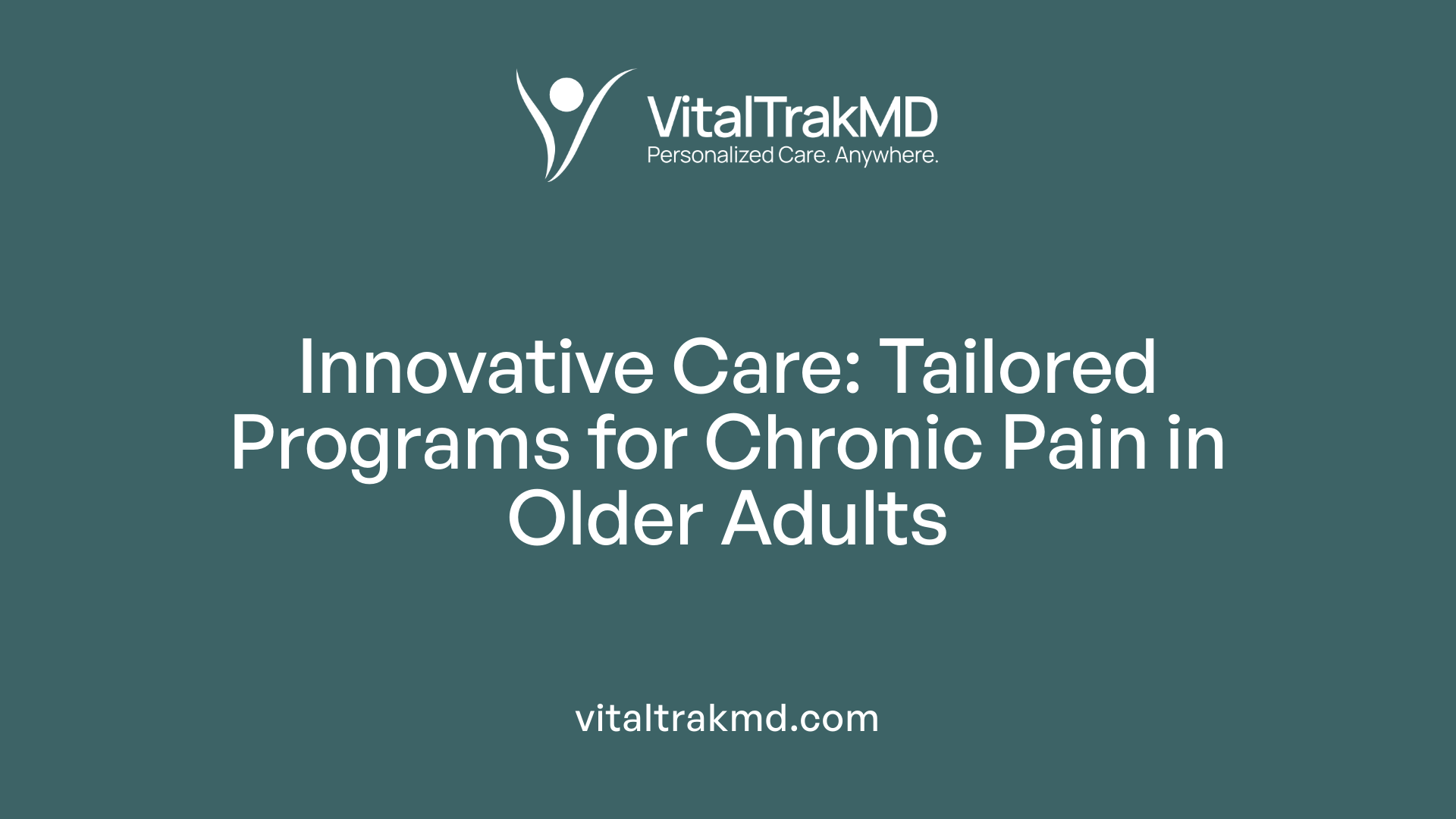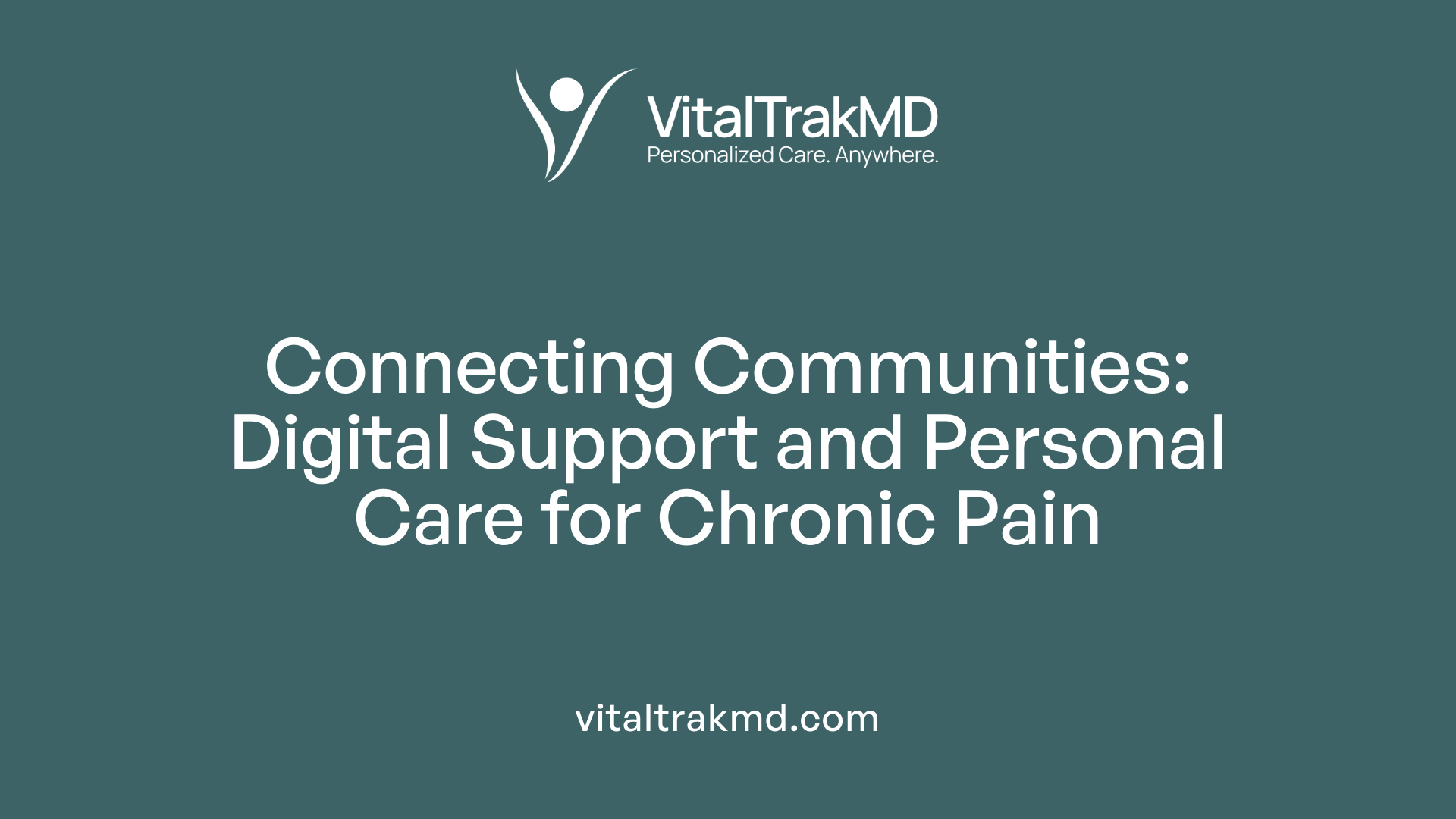Supporting Seniors With Virtual Support for Chronic Pain Management

Virtual Support: A New Frontier in Chronic Pain Management for Seniors
Chronic pain is a prevalent issue among older adults, often limiting their physical activity and overall quality of life. With nearly 80% of seniors managing at least one chronic condition, innovative solutions are vital. Emerging virtual support systems—ranging from immersive VR exergames to community-driven digital health programs—are showing promise in empowering seniors to manage pain effectively and regain functional mobility. This article explores how these cutting-edge and community-based interventions are redefining chronic pain management for seniors by integrating technology, personalized care, and holistic wellness strategies.
Virtual Reality Exergames: Personalizing Pain Management for Older Adults

How can virtual reality aid in managing chronic pain in seniors?
Virtual reality (VR) exergames offer a promising approach to managing chronic pain in older adults, particularly for back pain. These interactive games combine physical exercise with immersive technology, tailoring activities to each user's specific movement abilities and pain levels. This individualized approach helps ensure that seniors remain active safely while addressing their pain.
A comprehensive requirements analysis involving both geriatric patients and healthcare professionals highlighted essential features for an effective VR pain management system. These features include individual briefing tailored to the user, an easy-to-navigate interface suitable for older adults, and exercises designed with movement limitations in mind. Crucially, the system must prioritize safety by incorporating protections against falls and allowing therapists to intervene or adjust exercises as needed.
In addition, the integration of biofeedback—such as stress sensors and posture correction—plays a vital role in psychoeducation. By providing real-time insights into body positioning and stress levels, seniors gain a better understanding of pain triggers and management techniques. This can lead to improved adherence to exercise regimens and positive behavioral changes.
To keep users motivated over time, gamification elements like positive feedback and rewards are incorporated. These features enhance engagement and encourage consistent participation, which is essential for achieving longer-term pain relief and improved functioning.
Overall, VR exergames represent a user-centered, safe, and interactive solution that combines physical therapy with educational tools and motivational strategies to support older adults in managing chronic pain effectively.
Designing Care Programs that Enhance Outcomes for Seniors with Chronic Pain

How can care programs be designed to improve patient outcomes?
Effective care programs for seniors with chronic pain must be tailored to individual needs, combining expertise from medical, psychological, and social domains. This multidisciplinary approach ensures that all aspects of chronic pain are addressed, including physical symptoms, mental health, and environmental factors.
Tailored Multidisciplinary Care
Programs such as VR exergames highlight the importance of personalized interventions. Features like individual calibration, exercise customization respecting movement limitations, and therapist oversight improve safety and effectiveness. Likewise, programs involving physiotherapists, psychotherapists, and community health workers provide comprehensive support that adapts to each senior's condition.
Importance of Patient Education and Empowerment
Empowering older adults with pain management knowledge is crucial. Educational workshops—like those offered by the Council on Aging—cover chronic disease and pain self-management, while innovative approaches such as the “Bingocize” program make learning engaging and accessible. Positive feedback, rewards, and gamification elements in VR platforms further encourage adherence and active participation.
Continuous Monitoring and Treatment Adjustment
Regular assessments enable timely adjustments to therapy, enhancing long-term success. Tools including biofeedback sensors and weekly support calls (as seen in the STEPS-2 program) help monitor pain and emotional status, enabling personalized modifications and ongoing psychoeducation.
Integration of Mental Health and Social Support Services
Addressing emotional and social dimensions is imperative. Programs that include psychotherapeutic input and community-based support help alleviate stress and isolation—challenges that particularly intensified during periods such as the COVID-19 pandemic. These services create a supportive environment that increases motivation and improves quality of life.
By combining these strategies—individualized care, patient education, continuous monitoring, and integrated psychosocial support—care programs can effectively enhance outcomes for seniors living with chronic pain.
Community Health Initiatives: Bridging Digital Support and Personal Connection

What was the STEPS-2 pilot program?
The STEPS-2 pilot program was designed to help older adults manage chronic pain using mobile health tools combined with support from community health workers. Targeting African American seniors in Detroit, the program aimed to enhance pain understanding and self-management through digital resources and personalized assistance.
How did community health workers contribute?
Community health workers played a vital role by offering weekly phone support, addressing not only pain-related issues but also accompanying stress and emotional challenges. Their involvement personalized the program, ensuring participants received encouragement and guidance tailored to their circumstances.
What was the impact of phone support during isolation?
The weekly phone support was especially valuable during the COVID-19 pandemic, when isolation heightened emotional distress and limited access to in-person care. Patients reported that this regular contact helped them cope better with pain and stress, fostering adherence to pain management strategies and improving overall wellbeing.
How is the program expanding to underserved communities?
Building on promising pilot results, STEPS-2 aims to broaden its reach through larger, randomized controlled trials. These studies are designed to evaluate effectiveness in underserved populations, providing evidence needed to scale the initiative and adapt it for diverse community settings.
These efforts illustrate how combining digital health tools with empathetic human interaction can effectively support older adults in managing chronic pain, especially in communities facing health disparities.
Innovative Wellness Programs Supporting Senior Health and Chronic Pain Self-Management

What are some effective wellness programs to promote overall health?
Wellness programs designed for older adults focus on supporting physical, mental, and social well-being to address common challenges such as chronic diseases and pain. The Council on Aging offers a variety of free workshops tailored for seniors and caregivers, including the Diabetes Self-Management Program, the Chronic Disease Self-Management Program, and the Chronic Pain Self-Management Program. These workshops equip participants with practical skills to manage health conditions and improve quality of life.
Fall prevention is another critical area, with programs aimed at reducing risk and enhancing safety. For example, Tai Chi for Arthritis and Fall Prevention is widely recognized as a safe and effective exercise that helps older adults improve flexibility, muscle strength, posture, and balance. These benefits are essential for maintaining independence and preventing injuries.
An innovative approach to wellness is found in the Bingocize program, which creatively combines the familiar social activity of Bingo with health education. This unique program strengthens physical health by improving strength and balance, enhances cognitive function, and fosters social engagement—all factors that contribute to reduced falls and better overall wellness.
Together, these programs demonstrate effective, multifaceted strategies that promote senior health by integrating education, physical activity, and social connection.
Sustainable Weight Loss and Lifestyle Changes to Complement Pain Management

What strategies are most effective for sustainable weight loss?
Sustainable weight loss is best supported by adopting lasting lifestyle changes rather than quick fixes. This means incorporating a balanced diet filled with fruits, vegetables, whole grains, and healthy fats. Alongside nutrition, regular physical activity—such as walking, Tai Chi, or strength training—is essential to improve overall health and support weight management.
Setting realistic and achievable goals helps maintain motivation and allows individuals to track progress over time. It’s important to recognize that changes should be gradual and personalized to fit different needs and abilities, especially for older adults managing chronic pain.
Behavioral changes like managing stress effectively and ensuring adequate, restorative sleep also play a critical role. Stress can impact eating habits and pain perception, so techniques such as biofeedback or mindfulness may support healthier behaviors.
Strong social support, including family, caregivers, or professionals like physiotherapists and community health workers, can provide encouragement and guidance. Programs offering group activities or workshops—such as those run by aging councils incorporating exercises like Tai Chi for Arthritis or health education games—can enhance engagement, promote social interaction, and support sustained lifestyle changes.
Combined, these strategies create a comprehensive approach that supports not only weight loss but also improved pain management and overall wellness in older adults.
The Future of Pain Management: Integrating Technology, Care, and Community
Supporting seniors with chronic pain requires a multifaceted approach that blends innovative technology, personalized care, community support, and sustainable lifestyle changes. Virtual reality exergames offer engaging and tailored physical therapy combined with biofeedback and gamification to motivate older adults. Community health worker programs and wellness workshops extend vital emotional and educational support, enhancing adherence and social connection. Incorporating effective weight management and holistic wellness programs further optimize outcomes. Together, these strategies herald a future where older adults can better manage chronic pain and maintain quality of life through accessible, empowering, and comprehensive virtual support systems.
References
- Virtual reality in pain therapy: a requirements analysis for ...
- Online tools, community health resource guidance could help ...
- Health & Wellness Workshops -
- Weight loss: 6 strategies for success
- 5 steps to sustainable weight loss
- Steps for Losing Weight | Healthy Weight and Growth
- Optimal Diet Strategies for Weight Loss and ...
Recent articles
Want to Feel Better and Live Healthier?
Join hundreds of patients taking control of their health with personalized care that fits their life – not the other way around.
Rated 4.8/5 by 32+ customers







